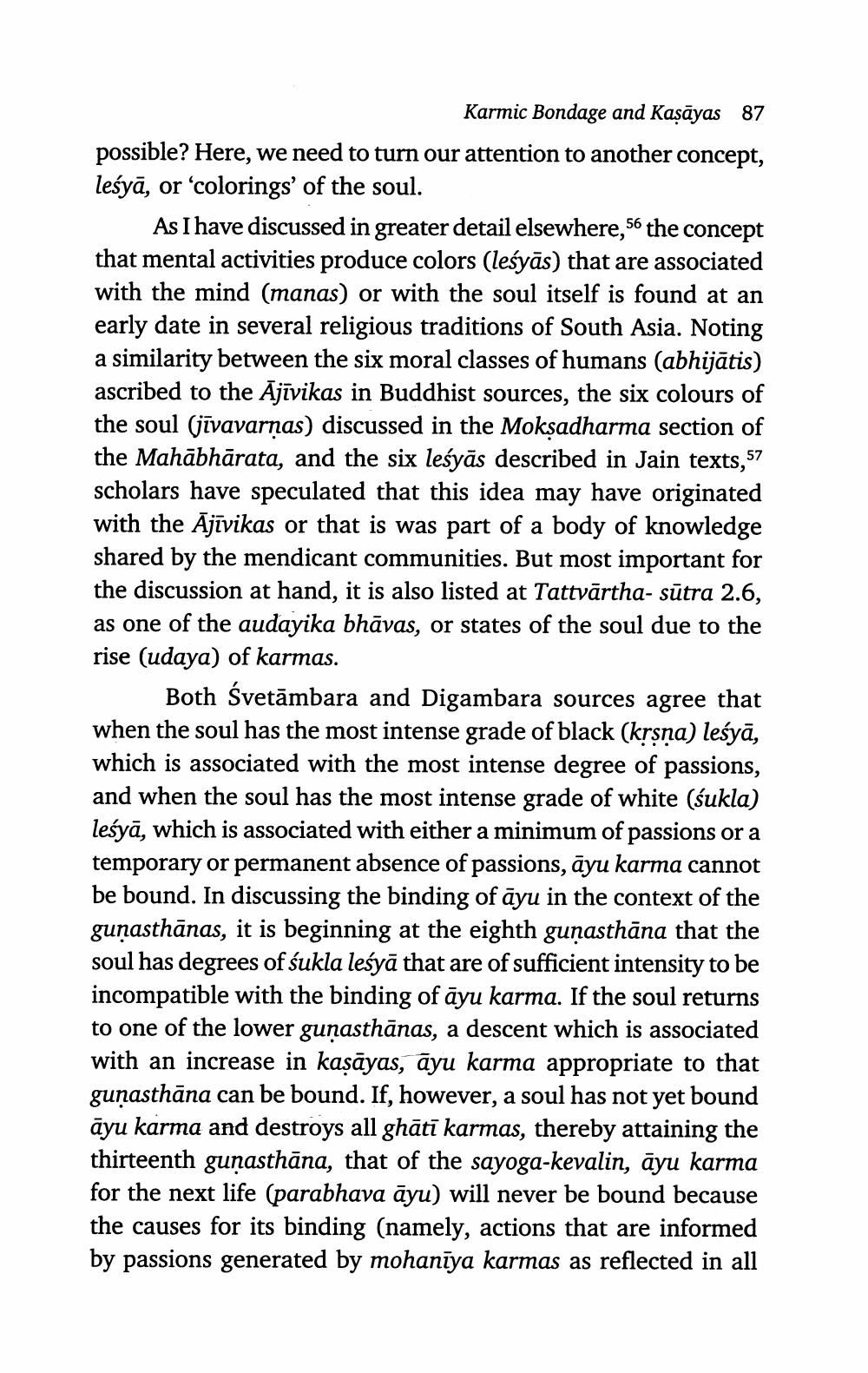________________
Karmic Bondage and Kaşāyas 87 possible? Here, we need to turn our attention to another concept, leśyā, or “colorings' of the soul.
As I have discussed in greater detail elsewhere, 56 the concept that mental activities produce colors (leśyās) that are associated with the mind (manas) or with the soul itself is found at an early date in several religious traditions of South Asia. Noting a similarity between the six moral classes of humans (abhijātis) ascribed to the Ājīvikas in Buddhist sources, the six colours of the soul (jīvavarnas) discussed in the Moksadharma section of the Mahābhārata, and the six leśyās described in Jain texts, 57 scholars have speculated that this idea may have originated with the Ājīvikas or that is was part of a body of knowledge shared by the mendicant communities. But most important for the discussion at hand, it is also listed at Tattvārtha- sūtra 2.6, as one of the audayika bhāvas, or states of the soul due to the rise (udaya) of karmas.
Both Śvetāmbara and Digambara sources agree that when the soul has the most intense grade of black (krsna) leśyā, which is associated with the most intense degree of passions, and when the soul has the most intense grade of white (śukla) leśyā, which is associated with either a minimum of passions or a temporary or permanent absence of passions, āyu karma cannot be bound. In discussing the binding of āyu in the context of the gunasthānas, it is beginning at the eighth gunasthāna that the soul has degrees of śukla leśyā that are of sufficient intensity to be incompatible with the binding of āyu karma. If the soul returns to one of the lower guṇasthānas, a descent which is associated with an increase in kaṣāyas, āyu karma appropriate to that gunasthāna can be bound. If, however, a soul has not yet bound āyu karma and destroys all ghātī karmas, thereby attaining the thirteenth gunasthāna, that of the sayoga-kevalin, āyu karma for the next life (parabhava āyu) will never be bound because the causes for its binding (namely, actions that are informed by passions generated by mohanīya karmas as reflected in all




